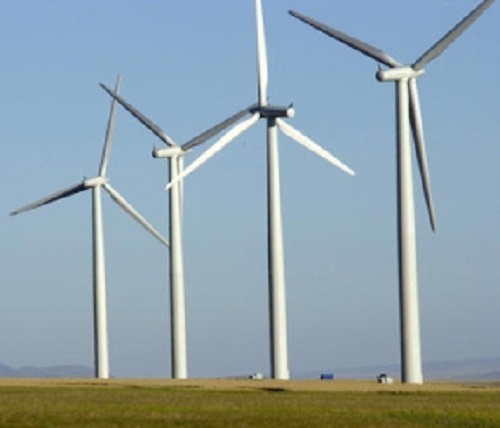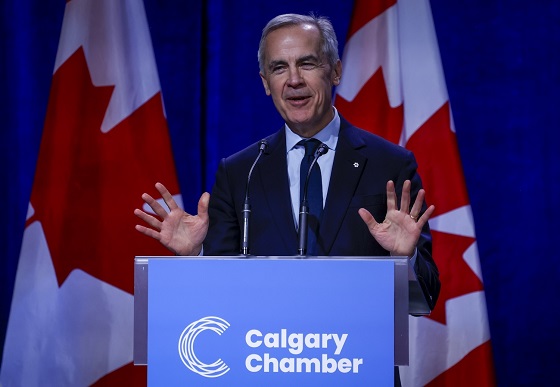By Elizabeth Nickson
All that money is wasted. Wind and solar and the various battery projects have not managed to support the electrical grid in any substantial way, hovering, on average, around 4 percent.
The most egregious theft of collective wealth and well-being — and it is flat-out theft — is the churn on “alternative” forms of energy production. Senator Tommy Tuberville of Alabama said last week in an interview with Steve Bannon that the U.S. has spent some $7 trillion over budget in the last three years, and 25 percent of that went to “climate change” projects. They are all like Solyndra, massively subsidized and within a decade, massive failures. “The investors take a tax loss,” said Tuberville, “then move onto the next effort where they again loot the public.” This is salted through all the investment banks, retirement accounts. It represents all putative growth.
In June of 2023, the Department of Energy admitted that it had allocated $1.3 trillion for “clean energy” investment support since 2020, and that spending rose 25 percent from 2021-23. This is a fraction of what was really spent. Further, this money is not only based in debt, thus raising inflation, but it is also raising energy prices. It is the principal reason that almost 25 percent of us, according to economist Peter St. Onge, have been forced to choose between heat and food this winter.
What a choice.
$1,750,000,000, in an annual gift to the rich. The World Economic Forum projects that climate spending in the U.S. will triple over the next ten years. Biden’s “climate” budget is $5.7 trillion. Triple that to $20 trillion. No wonder the market is booming. The U.S. has pledged another half a trillion in “low carbon electricity” under this year’s Paris Climate Accord. And further:
- Among all measures tracked since 2020, direct incentives for manufacturers aimed at bolstering domestic manufacturing of “clean” energy now total to around $90 billion.
- Since the start of the global energy crisis, governments have also allocated $900 billion to short-term consumer affordability measures, additional to pre-existing support programs and subsidies. Around 30 percent of this “affordability” spending has been announced in the past six months, and despite calls to better target households and industries most in need, only 25 percent of affordability measures are targeted towards low-income households and most-impacted industries.
Much of this last $900 billion is direct subsidy to the wealthy in annual subsidies for clean energy. This is again, annual subsidy, so look at the last twenty years. President Obama started this program, therefore, we are looking at a $10 – $ 20 trillion gift to the rich since the Lightbringer took office. What is not counted in these budgets are the losses that accrue from the failure of “green energy” projects, which is the taxpayer’s loss.
Last year, investors in Spain’s green energy collapse took the government to court to claw back subsidies from a dead industry in a country with a debt 400 percent larger than GDP. No wonder millions on the street want to outlaw socialism. As is clear from Spain, when the government runs out of money the first thing to go is the subsidy to green energy, after which the enterprise fails immediately.
In my neck of the Canadian woods, you can install a solar system for $20,000, and get a 25 percent subsidy, as does the installer whose business the government created via “free” “investment.” I live in a rain forest. Which means solar is not available during winter rains and not needed during the summers. Recently everyone with a few extra bucks has taken up the government offer to install heat pumps, also subsidized by between 50 percent and 75 percent. Rain forests mean hydro power, which is essentially, greenhouse-gas-free, and the most inexpensive “fuel,” but an almost-free heat pump? Again win/win for the upper-middle-class because no one in Canada’s increasingly massive working class can afford it.
This model was invented by politicians in power. The first person to notice it was Peter Schweizer; in Throw Them All Out, he details the billionaire investors who funded Obama and who were cashed out via various solar and wind projects. Hundreds of billions of dollars went missing on Obama’s various “clean energy” projects.
This year, every government department is “investing” in clean energy, vis, a quick Google search, will show. Pages and pages of boastful press releases follow. Every agency is in on the boondoggle. NOAA, the National Oceanic and Atmospheric Administration, and the U.S. Patent and Trade Mark Office have signed a collaborative agreement to advance climate technology. Putting aside the fact that “climate change” is neither imminent nor dangerous, the government should not be creating patents. Innovation should be carried out by the private market, where there are controls.
As we discovered during Covid, government patents on both the virus and the vaccine were not subjected to court challenge, double blind testing, or feasibility. There is no number attached to NOAA’s “initiative,” but this is representative of ten thousand such projects salted through every government bureau. All that money is wasted. Wind and solar and the various battery projects have not managed to support the electrical grid in any substantial way, hovering, on average, around 4 percent. Despite this mind-boggling waste of money, in September last year former New York City mayor Michael Bloomberg pledged another $500 billion to shutter the equivalent of 40 percent total electricity use of nine states, including California, Florida, New York, Illinois and Texas.
What has been the result of trillions of public money shunted into “clean” “green” “energy” on the actual energy grid? Robert Bryce, an acknowledged expert, shows that it is failing. A speech he gave at the winter meeting of the National Association of Regulatory Utility Commissioners showed astonishing, across the-board failure in every metric you can imagine.
“Climate Policy” is considered the most significant risk. As Bryce describes, “green energy” has meant Europe is deindustrializing, Ford lost $64,731 for every EV it sold, and the IEA states that global coal use will hit another new record of 8.5 billion tons. Coal use increased 35 percent in last summer’s heat wave. Wind dropped by 21 percent.
Climate policy breaks everything. It breaks communities, it encourages widespread theft of public money, it starves productive work and manufacturing, it has punched down on the less advantaged, and it is destroying the fabric of our lives. And for what?
First published in thepipeline.org, March 24, 2024.
Elizabeth Nickson is a Senior Fellow at the Frontier Centre for Public Policy.
























